Review for Samurai Warriors - Complete Season 1 Collection & Special OVA
Introduction
Just take a look at the character list in this show, Yukimura Sanada, Keiji Maeda, Masamune Date, Ieyasu Tokugawa, Hideyoshi Toyotomi etc, and it will quickly become evident that this is yet another action packed Warring States period anime, although a little closer analysis will reveal that it’s towards the end of that era, once Japan had been mostly unified. There are just so many of these stories adapted to anime each year that it’s hard to keep track. There’s part of me that wishes that they’d just keep on using the character designs from Sengoku Basara so I wouldn’t have to waste time learning over again just who is who. I do admit that it would make the gender switched anime look extremely weird, like that Cromartie High School episode with the characters in drag, but it would make my life a tad easier.
The Warring States period in Japan saw warlords from all over the country battling to see who would rule Japan, in the greatest free for all in history. You might have thought that it was all over once Hideyoshi Toyotomi managed to defeat the other warlords and unite the country under his banner. But he never had the time to celebrate his victory, dying young, and leaving a child heir who was in no way ready to rule. His dying wish to his generals, Ieyasu Tokugawa and Ishida Mitsunari was to rule the country in the Toyotomi name until Hideyori Toyotomi was ready to ascend to the throne. The problem is that Mitsunari and Tokugawa have different ideas on how to run the country. For brothers Yukimura and Noboyuki Sanada, loyal retainers to Toyotomi, it’s a simple decision as to which side to support. Unfortunately the brothers choose different sides. As the barely united country descends once more into civil war, brother will face brother in battle.
Samurai Warriors has been a long time coming. Manga Entertainment announced it quite some time ago, but have had to wait on Funimation in the US to finish dubbing and localising it. Funimation have taken their sweet time about it, deciding at the last minute to keep it as a DVD only release. That’s why we in the UK are only getting Samurai Warriors on DVD as well.
12 episodes plus extras are presented across 2 DVD discs from Manga Entertainment.
Disc 1
1. United Under the Cherry Tree
2. Separation at Inubushi
3. Storm at Ueda Castle
4. Sunset at Sekigahara
5. Where Life Shall Go
6. Prison of the Heart
7. Crimson Blade
Disc 2
8. Way of No Return
9. Winds of Osaka
10. The Peerless Fortress
11. Castle of Solitude
12. Mightiest Warrior of Japan
Picture
Samurai Warriors gets a 1.78:1 anamorphic NTSC transfer on these discs. After a few minutes, you can see why Funimation chose to release this as a DVD only release, a choice that has filtered down to the way that Manga are releasing it here. The image is clear and sharp, with strong colours and vivid character designs, but there is no particularly strong detail in the show, and the animation does little more than it has to, to tell the story. This is very much a simple and comparatively static animation, and other than the consistency of the character designs, could easily have been produced twenty or more years ago. But as I said, it does enough to tell its story.
Sound
You have the choice between Dolby Digital 5.1 Surround English, and 2.0 Stereo Japanese, with optional subtitles and a signs only track. I watched the show in Japanese and it was fair enough, decent voice actor performances with the show’s action coming across well. I gave the dub a try, and found one of those stilted dubs where voice actors get trapped by pronunciation issues. There’s a lot of long names and history to get right here. The subtitles are accurately timed and free of typos.
Extras
The discs present their contents with static menus. Each episode is followed by comedy shorts with super-deformed characters, and there is a translated English credit reel as well.
The sole extras are on disc 2, but for once we get something more appealing than the usual Funimation commentaries (apparently now Blu-ray exclusives across their range).
Samurai Warriors: Legend of the Sanada lasts 49:31 and is a prequel to the series, following brothers Yukimura and Noboyuki Sanada from the fall of their liege lord Takeda Shingen, to just prior to their alliance with Hideyoshi Toyotomi. It encompasses their move to Ueda and the construction of their castle, as well as the politicking in the area with the Uesugi and the Tokugawa, culminating in a major battle at Ueda. It’s an interesting story and a nice companion piece to the series.
You also get the textless credits.
Conclusion
Samurai Warriors is just like Sengoku Basara. Both are anime shows that are based on video game series, both are set during the Warring States period of Japan some 400 years ago, and both feature big name characters from that time all given unique and striking character art, and unleashing world shattering and army destroying finishing moves when they fight. In comparison the regular troops are identikit, CG cannon fodder. Samurai Warriors’ story is set some time after that of Sengoku Basara, towards the end of the Warring States period, when Japan was finally on the verge of being unified under one leader.
Samurai Warriors isn’t as good as Sengoku Basara. At least not when it comes to budget and animation, and maybe not when it comes to attention grabbing characterisation. When the warriors in Sengoku Basara go all out, you can see it on screen, every penny spent on the animation, every hour spent at the computer workstation getting the eye-candy just right. And the characters in that show are so over-the-top, so vivid, that you can relish watching an episode of that. In comparison, Samurai Warriors’ characters are somewhat subdued, bordering on the realistic at times. Sure, there is macho posturing, full tilt emoting, and enough variation in the characters to make them distinct, but it is a pale shadow of Sengoku Basara’s hyper-histrionics. The animation too is pretty low budget, not too hot on the frame count, and we’ll get mediaeval lego bricks on maps instead of high polygon action sequences for some of the more tactical manoeuvres.
Samurai Warriors is better than Sengoku Basara. Sengoku Basara took the Warring States period and characters and went full on crazy with them, throwing in cyborgs, flying ninja, machine guns, and pacts with the devil. It was full on nuts. Samurai Warriors sticks somewhat closer to the history. You still get manly warriors single-handedly changing the course of battles with suicidal charges, but the anachronisms are fewer, and you do get the sense that this story is actually re-telling a genuine history. It’s picked an interesting part of that history too, set towards the end of the Warring States, when Japan had been tentatively unified by the Toyotomi clan. The problem was that Hideyoshi Toyotomi died young, and without an heir of age to take his place. In the show, his dying wish to his generals was to rule together in his stead until his son was old enough to take over.
But in the show, his deputies, Mitsunari and Tokugawa have different visions of national unity, especially Tokugawa, who had to this point stifled his own ambition to follow Toyotomi’s lead. Mitsunari and Tokugawa wind up on opposite sides, and the country falls back into war. The tragedy of the piece and the heart of the story is that former Takeda and then Toyotomi retainers, Yukimura and Noboyuki Sanada choose different sides in the war, and wind up facing each other in battle. It’s also an interesting twist in that initially it is shown as Mitsunari staying loyal to Toyotomi’s vision, and Tokugawa Ieyasu set up as the betrayer, the back-stabber. But gradually it is revealed just what Tokugawa’s vision of national unity and peace actually is, and despite his methods, it’s shown to be a better way. Civil wars that divide families are tragic at the best of times, but there’s a further ironic tragedy when both sides are right.
The quality of the story, the use of genuine tactics and strategy in the battle sequences, and the comparative depth, subtlety and complexity of the characterisations is why I prefer Samurai Warriors to Sengoku Basara. Don’t let the production values and low-budget animation fool you, this is a far more rewarding story to watch.
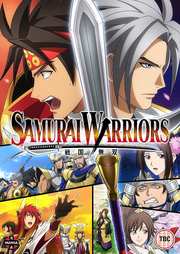

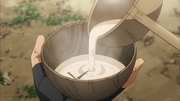
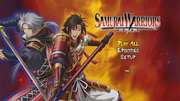

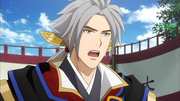
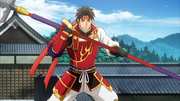
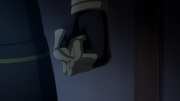


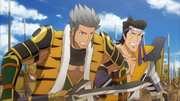
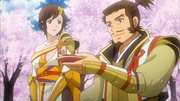
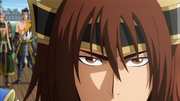
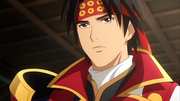

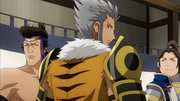
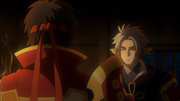
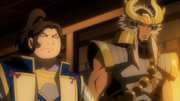

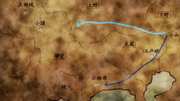


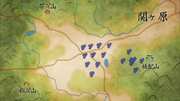










































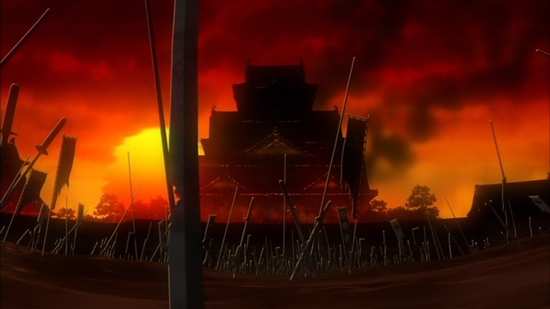







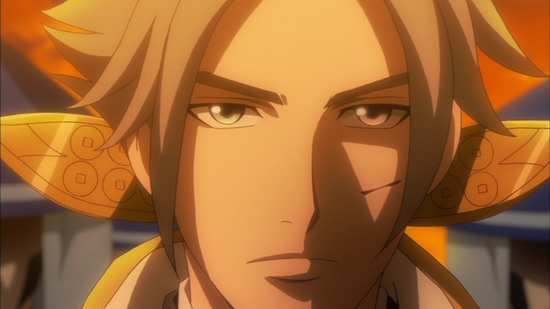
Your Opinions and Comments
Be the first to post a comment!